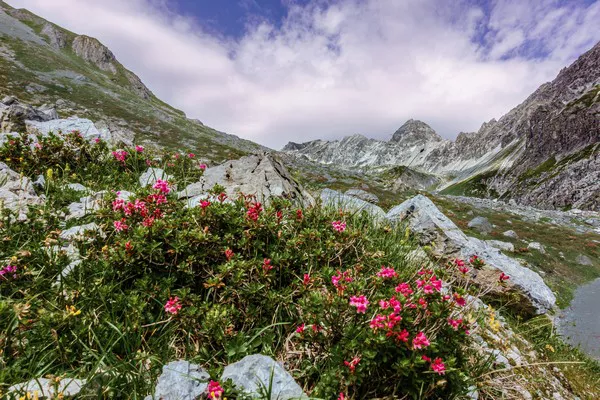Death Valley National Park in California has become a vibrant tapestry of colorful wildflowers, drawing crowds of visitors eager to witness this rare spectacle. Referred to as a “super bloom,” this extraordinary event has captivated many with its breathtaking display of nature’s splendor.
Described by the National Park Service (NPS) as a “high concentration of blooming flowers,” Death Valley, renowned as one of America’s hottest regions, is currently ablaze with hues of gold, purple, pink, and white, as announced on the NPS website.
While the term “super bloom” has been widely used to characterize this phenomenon, official confirmation of its classification remains pending.
Although wildflowers are not uncommon in the valley each year, a super bloom is an exceptional occurrence that entices a diverse array of pollinators, including butterflies, moths, bees, and hummingbirds, to Death Valley, as highlighted on the National Park’s official website.
According to the NPS, the prerequisites for a successful wildflower season encompass well-distributed rainfall throughout the fall, winter, and spring, along with ample sunlight and minimal drying winds.
Reportedly, the year 2024 has provided the dry valley with the ideal combination of conditions necessary to foster this remarkable display of floral abundance.
When was the last super bloom observed in Death Valley? According to the NPS, the three most recent super blooms occurred in 2016, 2005, and 1998.
What constitutes a super bloom? These rare events, which transpire approximately once every decade in Death Valley, involve the emergence of extensive carpets of wildflowers under optimal environmental conditions.
What factors contribute to a super bloom? The NPS emphasizes the importance of at least half an inch of rainfall to remove the protective coating from seeds, followed by rainstorms at regular intervals between winter and spring to facilitate seed germination. Additionally, favorable blooms are typically precipitated by early rainstorms in September or October, coupled with an El Niño weather pattern that brings heightened rainfall to the Desert Southwest.
Moreover, super blooms necessitate the mitigation of drying winds, as excessive wind exposure without accompanying rainfall can desiccate the soil and impede plant growth before flowering occurs, as outlined on the NPS website.
Is it permissible to pick wildflowers in Death Valley? No, regulations within the national park strictly prohibit the collection of wildflowers, as this could disrupt the natural ecosystem and diminish seed availability for subsequent wildflower seasons.
What distinguishes Death Valley? Renowned as the hottest, lowest, and driest point in North America, Death Valley’s unique geographical characteristics contribute to the rarity of super blooms, requiring precise environmental conditions for their manifestation, as noted by Britannica.
Situated in southeastern California, approximately two hours west of Las Vegas, Death Valley National Park stands as a testament to nature’s resilience and allure, offering visitors a glimpse into the awe-inspiring beauty of the natural world.


